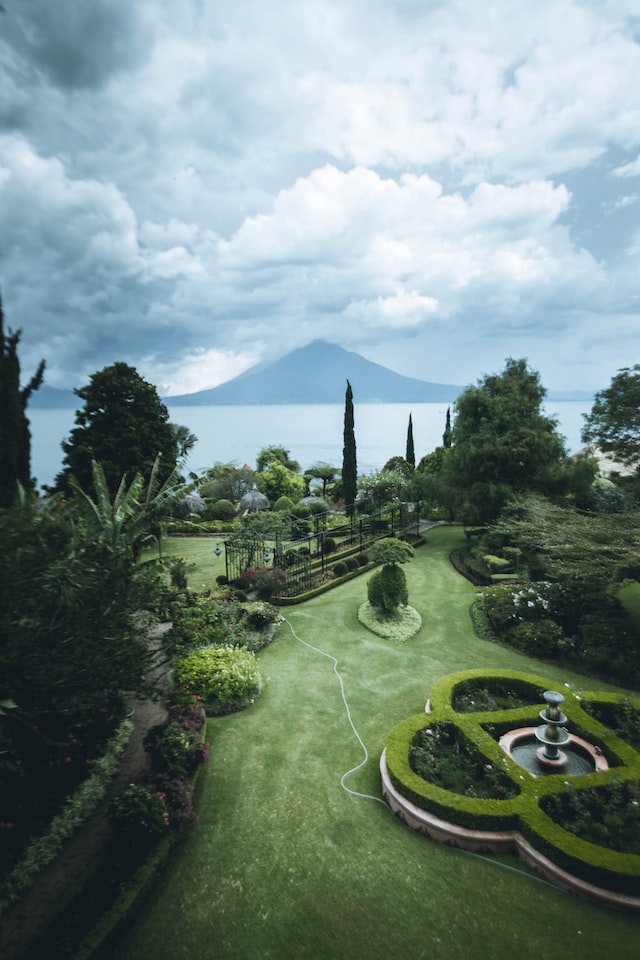There are various types of hardscape designs, including patios, landscaped walkways, sitting walls, retaining walls, water features, fire pits, outdoor lighting, grill surrounds, pergolas, and other custom-built features for your outdoor living space. These include formal, ecological, and naturalistic approaches. These design trends each have positives and negatives. When designing your new landscape, carefully take them into account.
Formal
Formal hardscape designs emphasize order and symmetry and often involve repeating patterns. Every element in landscaping Rock Hill, SC is arranged according to a specific pattern, from the size of plants to the shape of stone and concrete. The goal is to make the landscape look elegant and beautiful. These designs often include a central feature to draw attention to the garden and improve its aesthetic appeal.
A traditional formal garden design features geometric shapes, often at right angles, but can also feature curves. In addition, it should have a distinct outline, such as a circle or square. Geometric shapes can also be used in the hardscape, such as an extended patio or trellised bench. Formal hardscape designs can be made up of various materials, and some people choose to incorporate stone or mulch into their landscaping plan.
In contrast, an informal landscape design focuses on a more natural appearance. This style is less formal but still preserves the natural look of plants and ornaments. Because informal designs are not as well-defined, they may not be as easy to manage. For example, it can be difficult to distinguish between a well-maintained, organized landscape and an overly-cluttered mess.
Naturalistic
A naturalistic hardscape design incorporates elements from the landscape that are in harmony with nature. These elements may include curved lines, informal flowerbeds, and stoic rows of arborvitae. But it’s more than just naturalistic landscaping. You can incorporate different plants, textures, and motions to achieve this look.
One of the best benefits of naturalistic planting is that it can last throughout the winter, thus extending the season of interest. This landscaping also benefits small animals by providing extra shelter and habitat. Besides, naturalistic planting also requires minimal maintenance. Rather than raking leaves or raking, naturalistic planting leaves, plant silhouettes, and seed heads are in place all year long.
Naturalistic hardscape designs should use natural materials whenever possible. For instance, you should avoid using artificial structures, such as fences, in the garden. Likewise, it is best to avoid creating too many artificial features, such as stairs and railings and focus instead on incorporating natural elements like grass and moss.
Ecological
Ecological hardscape designs are becoming an increasingly popular practice for landscape architects. This design integrates biological, cultural, and physical patterns to benefit people and nature. These designs also have the potential to evolve to meet the challenges of climate change. Landscape architects must apply new approaches, research, and tools to achieve this. It will allow you to create beautiful, healthy landscapes that will be sustainable for the long term.
Ecological hardscape designs should support basic biological processes for human health and well-being. These processes occur in natural systems and are also present in areas outside of large green parcels. These processes include controlling water flow, retaining limiting nutrients, and neutralizing toxins. These processes are more efficient and sustainable in designed systems.
Ecological principles have long influenced the practice of ecology. The field of ecology has grown in popularity as a way to understand the complex interrelationship between human and natural systems. Architects and landscape professionals can integrate the theory of ecology into their design process.
Concrete
Concrete hardscape designs are a great way to create an elegant, modern look for your outdoor area. Sleek lines and large geometrical patterns characterize contemporary designs. Plants and greenery can complement these types of features. To make your hardscape design seem more natural, add plants and greenery around it. When constructing a hardscape, you should work with an expert to ensure that it is safe and aesthetically pleasing.
When installing a hardscape, following the proper drainage techniques is important. The concrete should be graded away from your home, allowing water to drain naturally into a catch. It will help prevent the concrete from discoloring over time. Also, you’ll have an easier time cleaning it. Finally, make sure your focal point serves a functional purpose.
Numerous concrete hardscape designs allow you to experiment with color and texture. Stained concrete never looks the same. This type of material in your backyard will add character and personality to your home without breaking the bank. It’s important to ensure that the team working on the project has the right skills and a commitment to a quality finished product.
